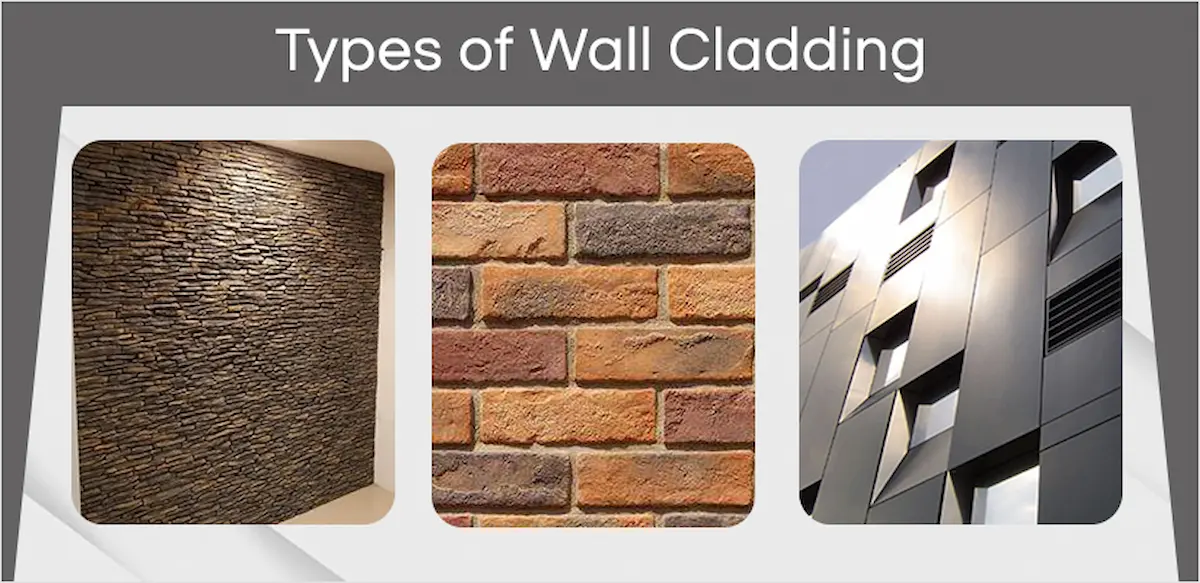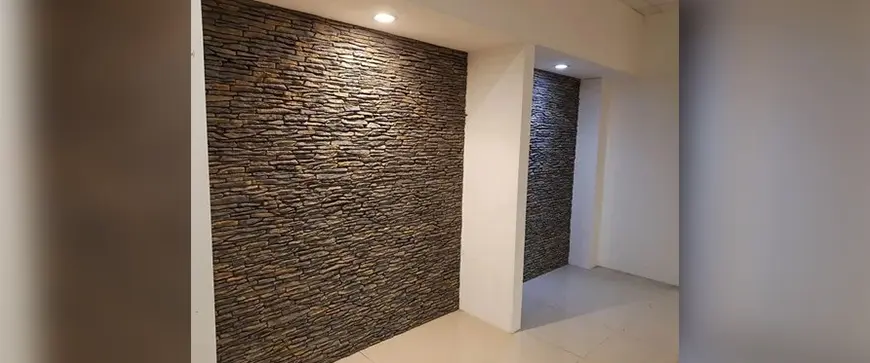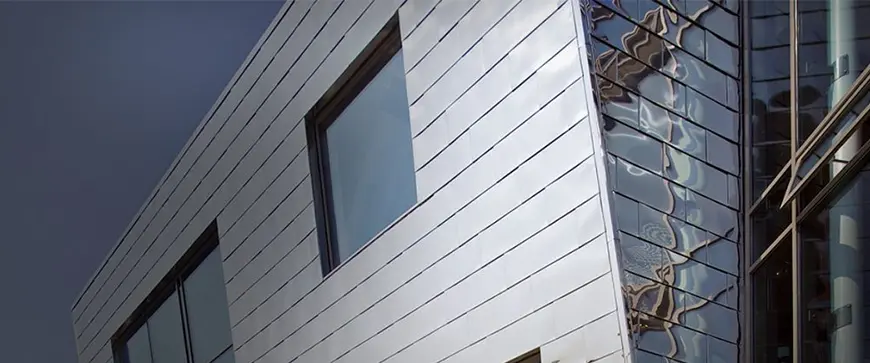Introduction
At The News Hub, we take pride in providing you with the most comprehensive information about wall cladding. As experts in the field, we understand the importance of choosing the right wall cladding material for your project. In this article, we will delve into the various types of wall cladding, their benefits, and the installation process. We aim to equip you with the knowledge you need to make an informed decision and create a visually appealing and durable space.
Types of Wall Cladding
 Explore different types of wall cladding, benefits, and installation. Enhance aesthetics, and protect your space. The diverse dimensions, textures, and materials give rise to several types of wall cladding, each finding increasing use in buildings. Some commonly employed cladding types are:
Explore different types of wall cladding, benefits, and installation. Enhance aesthetics, and protect your space. The diverse dimensions, textures, and materials give rise to several types of wall cladding, each finding increasing use in buildings. Some commonly employed cladding types are:
- Stone Cladding
- Brick Cladding
- Vinyl Cladding
- Wooden Cladding
- Stainless Steel Cladding
- Aluminum Cladding
- Fibre Cement Cladding
- Laminate Cladding
#1. Vinyl Cladding

Vinyl cladding is a popular choice due to its affordability and low maintenance requirements. It is made from polyvinyl chloride (PVC) and is available in a wide range of colors and textures. Vinyl cladding provides excellent weather resistance, durability, and insulation properties. Additionally, it is resistant to rot, termites, and fading, making it a long-lasting and cost-effective option for wall cladding.
#2. Stone Cladding

Stone cladding adds a timeless and natural aesthetic to any space. It is available in various forms such as natural stone veneer, cultured stone, and faux stone panels. Stone cladding offers durability, heat resistance, and sound insulation. It is commonly used in both interior and exterior applications, providing an elegant and sophisticated look.
#3. Timber Cladding

Timber cladding is known for its warm and inviting appeal. It enhances the natural beauty of wood and can be used to create a rustic or contemporary look. Timber cladding is available in different species, each with its unique characteristics. It provides good insulation properties and is environmentally friendly. However, regular maintenance is required to protect it from moisture and decay.
#4. Brick Cladding

Brick cladding is a classic choice that exudes strength and durability. It offers a wide range of design possibilities, allowing for various patterns and textures. Brick cladding is resistant to fire, pests, and extreme weather conditions. It provides excellent thermal insulation and requires minimal maintenance. Whether used in traditional or modern settings, brick cladding adds character and charm to any space.
#5. Metal Cladding

Metal cladding, such as aluminum or steel, offers a sleek and contemporary look. It is lightweight, durable, and resistant to corrosion. Metal cladding can be customized to achieve different finishes and textures, providing architects and designers with endless possibilities. It is commonly used in commercial buildings but can also be used to create a striking statement in residential applications.
#6. Aluminum Cladding

When comparing vinyl cladding to aluminum cladding, the latter is a pricier choice. However, it’s exceptional durability and long-lasting nature justify the higher cost. Aluminum cladding is commonly used for storage walls and basement walls in buildings. It requires minimal maintenance and can endure for years without the need for replacement. Furthermore, high-quality aluminum cladding is commonly employed in commercial buildings.
#7. Fiber Cement Cladding

For those seeking an affordable and durable cladding option, fiber cement cladding is the ideal choice. It offers both aesthetic appeal and strength. Additionally, the installation of these cladding units is easy, and they require minimal or even zero maintenance.
#8. Laminate Cladding

Laminate cladding is a popular choice for bathrooms and wet areas. Despite its affordability compared to other options, it offers superior performance. With a diverse range of cladding choices available, you can easily select the one that suits your specific requirements. Incorporating wall cladding into your building not only enhances its appearance but also provides optimal protection. Wall claddings contribute to increasing the overall value of your property.
Benefits of Wall Cladding
#1. Protection and Durability
Wall cladding acts as a protective layer for your building, shielding it from harsh weather conditions, moisture, and external elements. It enhances the lifespan of the structure and reduces maintenance costs.
#2. Enhanced Aesthetics
By choosing the right type of wall cladding, you can significantly enhance the visual appeal of your space. Whether you prefer a modern, rustic, or traditional look, there is a cladding material to suit your design preferences.
#3. Improved Insulation
Certain types of wall cladding, such as vinyl and timber, offer insulation properties. They help regulate indoor temperature, reducing energy consumption and providing a comfortable living or working environment.
#4. Noise Reduction
Wall cladding can contribute to sound insulation, minimizing external noise and creating a quieter indoor environment. This is particularly beneficial in high-traffic areas or locations near busy roads.
#5. Sustainability
With an increasing focus on eco-friendly solutions, many wall-cladding materials are sourced from sustainable and renewable resources. Choosing environmentally friendly options helps reduce your carbon footprint and supports sustainable practices.
Installation Process
Proper installation is crucial to ensure the longevity and effectiveness of your wall cladding. We recommend hiring a professional contractor experienced in wall cladding installation. Here are the general steps involved:
- Surface Preparation: The surface where the cladding will be installed must be clean, dry, and free from any loose materials or debris.
- Moisture Barrier: A moisture barrier, such as a waterproof membrane, is applied to prevent water penetration.
- Framework Installation: A framework is constructed, providing a stable base for the cladding material.
- Cladding Installation: The chosen cladding material is carefully installed, following the manufacturer’s guidelines and ensuring proper alignment and spacing.
- Finishing Touches: Any necessary trims or accessories are added to achieve a polished and seamless appearance.
Frequently Asked Questions (FAQs)
- Q: How long does wall cladding typically last? A: The lifespan of wall cladding depends on various factors, including the type of material, maintenance, and environmental conditions. Generally, high-quality cladding can last for several decades.
- Q: Can wall cladding be installed on existing structures? A: Yes, wall cladding can be installed on both new constructions and existing structures. However, it is important to assess the condition of the existing surface and ensure proper preparation before installation.
- Q: Is wall cladding suitable for interior applications? A: Absolutely! Wall cladding is not limited to exterior use. It can be used to enhance interior spaces, providing a unique and decorative touch to walls.
- Q: How much does the wall cladding installation cost? A: The cost of installation varies depending on factors such as the type of cladding material, the size of the project, and the complexity of the installation. It is recommended to obtain quotes from reputable contractors for accurate pricing.
- Q: Can I change the cladding material in the future if I want a different look? A: In most cases, it is possible to replace the cladding material if desired. However, it may require additional work and cost, depending on the specific circumstances.
Conclusion
Wall cladding offers both functional and aesthetic benefits for your building. By understanding the different types of cladding, their advantages, and the installation process, you are well-equipped to make an informed decision.
At The News Hub, we are committed to helping you create stunning and durable spaces. Contact us today for expert advice and assistance with your wall cladding project.


